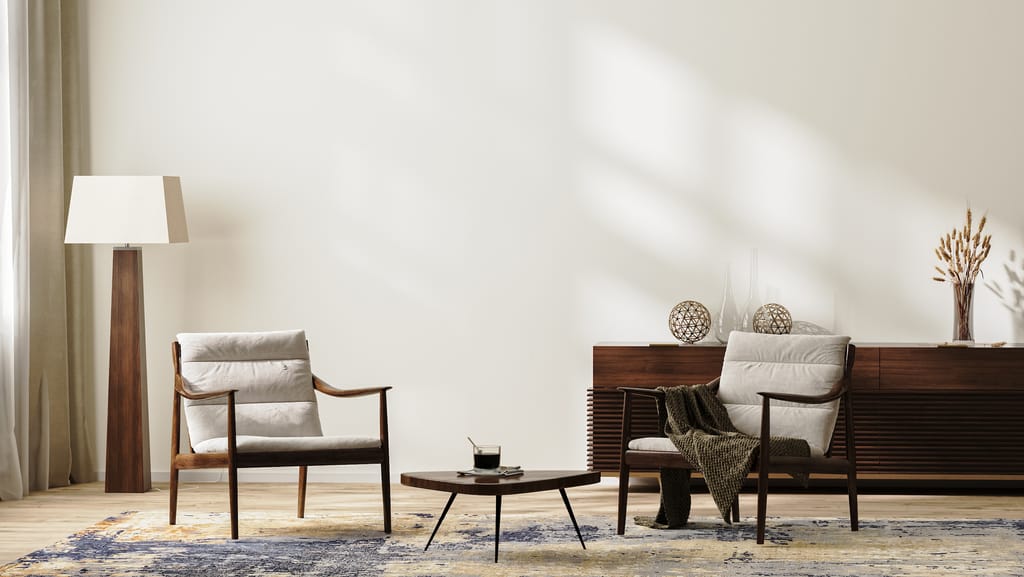What are neutral colors?
Neutral colors are colors considered being neither warm nor cool. We find them in nature, such as beige, gray, taupe, and brown. Neutral colors provide a great base for any interior design color palette, as they are easy to pair with other colors and offer a calming effect to a room. Neutral colors are timeless and can be used in any room in the home, from the bedroom to the living room and beyond.
Incorporating neutral colors
Neutral colors can be an easy way to provide an elegant and timeless look to any space. Neutral colors create a soothing atmosphere, and can be easily incorporated into any room in the home, regardless of the existing color palette. Here are some tips for incorporating neutral colors into your home decor.
Consider using neutral paint colors on your walls. Neutral shades such as beige, gray, and off-white can create a calming atmosphere, and provide a subtle backdrop for any decor. If you don’t want to commit to painting your walls a neutral color, you can also use neutral wallpaper to add texture and visual interest.
Incorporate neutral furniture pieces into your decor. Neutral-colored furniture can provide a classic look and will complement any decor. Opt for furniture pieces in shades such as white, cream, and gray, and add colorful accents to your furniture with pillows, throws, and other accessories.
Add accessories in neutral shades. Accents such as rugs, curtains, lamps, and artwork in neutral shades can add a unified look to your space. Accessories in shades such as black, white, and gray can also provide a sophisticated touch to any space. Remember to add a pop of color here and there. A few colorful accents can help to break up the neutral palette and add a bit of visual interest. With these tips, you can add a timeless and elegant look to any room in your home.

Exploring the elegance through neutral colors
We often view neutral colors as being bland and uninspired, but this couldn’t be farther from the truth. Neutrals are an elegant and sophisticated addition to any interior design, and they can add a sense of warmth, comfort, and relaxation to a room.
Neutral colors are versatile and can be used in a variety of ways. They can create a calming atmosphere, as neutrals blend into the background and create a soothing, tranquil atmosphere. They can also create a bold, modern statement. By combining different shades and textures of neutrals, you can create interesting visual interest without overdoing it.
Neutral colors are ideal for creating balance in a room. They can create a sense of harmony between distinct elements, such as furniture, walls, and accessories. They can also create a sense of openness and spaciousness. By using neutrals in the same shade, you can create a sense of unity and cohesiveness throughout the room.
Neutral colors are also great for creating an inviting atmosphere. Neutral tones are often associated with comfort and relaxation, and they can create a warm and inviting atmosphere.
Neutrals can also make a room feel larger, as they create an illusion of depth and space. It’s great to create a timeless look with neutral colors. Neutral tones are often associated with classic, timeless styles, and they are perfect for creating a timeless look that will never go out of style. Neutral colors can also create a classic, elegant look that is perfect for any home.

Benefits
Neutral colors, such as beige, gray, and white, have become increasingly popular in home decor. Although these colors may seem dull, they offer a host of benefits that make them well worth considering for decorating your home.
First, neutral colors create a sense of serenity and a calming atmosphere. This is especially helpful in bedrooms and living areas, as they have shown neutral tones to reduce stress levels and create a tranquil environment. These colors can help to make a room appear larger by making the walls seem to recede. This can create a spacious and airy feel in any room in your home.
Neutral colors also give you a greater opportunity for personalization and creativity. Since these colors serve as a blank canvas, you can easily accent them with bright colors and bold patterns to give your home a unique and eye-catching look. This can also make it easier to switch up your decor from season to season without having to completely redecorate.
Neutral colors are also an excellent choice for small or oddly shaped rooms. When used in these spaces, neutral colors can help to create the illusion of a larger area by minimizing the contrast between walls and furnishings. This can make small rooms appear much more spacious and inviting. Finally, neutral colors are extremely versatile and easy to maintain. Since they are free of bold patterns, they can decorate any room in your house. Plus, they are less likely to show stains, dirt, or scratches than brighter colors, making them a superb choice for high-traffic areas.
Creative Way
Neutral colors can provide a great base for any home design. They offer a timeless, classic look that can easily be dressed up or down, depending on the room. The beauty of these colors is that we can use them in any space, from bathrooms to bedrooms, and we can easily adapt them to fit any style. Here are some creative ways to use neutrals in your home design.
- Create a calming atmosphere. Neutral colors are perfect for creating a calming atmosphere in any room. Choose light and airy shades, such as beige, cream, or light gray, to create a relaxing environment. Accent the space with a few pops of color to add visual interest.
- Add texture. You can easily spice neutral colors up with the addition of texture. Incorporate woven fabrics, such as linen or cotton, to add depth and interest to the room. For a warmer look, opt for plush textures such as velvet or suede.
- Incorporate natural materials. Natural materials, such as wood and stone, look great with neutral colors. Incorporate wood floors or furniture, or stone countertops or backsplashes to bring a natural element to the design.
- Play with patterns. Neutral colors are a great canvas for incorporating patterns. Choose a bold wallpaper or an intricate rug to add a unique touch to the room.
- Layer the colors. To achieve a more dynamic look, layer different shades of neutral colors. For example, mix light gray with navy blue or beige with taupe to create a more interesting color palette.

Choosing the Right Neutral Color Palette
With choosing a color palette for your home, neutrals are often the best option. They are timeless, versatile, and provide the perfect backdrop for any interior design. They can also help make your home look more spacious and balanced. When picking the right neutral color palette for your home, there are some key elements to consider.
First, think about the size and shape of the room you are working in. Darker colors can make a room look smaller, while lighter neutrals can create the illusion of more space. You should also think about the other colors in the room, such as furniture and accents. Neutral colors are a great way to balance out bolder colors and create a stylish look.
Another important factor to consider is the amount of natural light in the room. Darker colors absorb more light, while lighter colors can help reflect it. If your room has lots of natural light, you can opt for a darker neutral color palette, while a room with less light might look better with lighter neutrals.
Lastly, consider the atmosphere you want to create in the room. Neutrals can create a calming and relaxing atmosphere, or a more energizing and vibrant one. Darker colors can create a cozy atmosphere, while lighter colors can make a room feel brighter and more spacious.
Conclusion
Neutral colors are colors that are considered being neither warm nor cool. We often use them in interior design to create a calming and unifying atmosphere. You can use neutrals on their own or in combination with other colors to create a balanced and harmonious look. Neutral colors can be a great way to create a timeless style that won’t look dated.
Reference
- A. (2022, September 10). Neutral Colors – How to Create and Use a Neutral Color Palette. artincontext.org. https://artincontext.org/neutral-colors/
- Green, S. (2022, July 14). What Are Neutral Colors? (And How to Use Them) – Homenish. Homenish. https://www.homenish.com/what-are-neutral-colors/
- S, E. (2022, March 30). Neutral Colors – The Realm of Color – Medium. Medium. https://medium.com/a-history-of-color/neutral-colors-e394cfce452